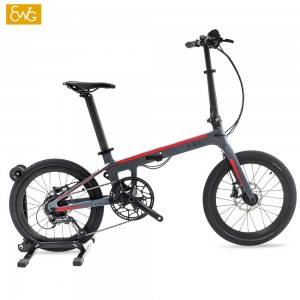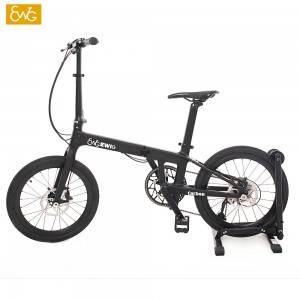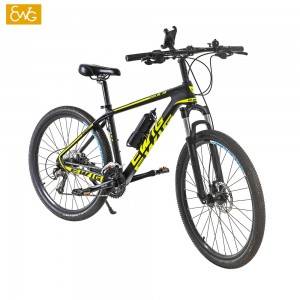Experts in carbon fiber agree that any material can fail. Wrecks happen from faulty aluminum, steel, and even rock-hard titanium. The difference with carbon fiber is that it can be difficult to detect signs of damage that might signal imminent failure. Cracks and dents in other materials are typically easy to see, but fissures in carbon fiber often hide beneath the paint. What’s worse is that when carbon fiber fails, it fails spectacularly. While other materials might simply buckle or bend, carbon fiber can shatter into pieces, sending riders flying into the road or trail. And this kind of catastrophic destruction can happen to any part of a bike made with the material.
It’s not that all carbon fiber is dangerous. When made well, carbon fiber can be tougher than steel and quite safe. But when made incorrectly, carbon-fiber components can easily break. The parts are built by layering fibrous carbon that’s bound together with resin. If the manufacturer skimps on the resin or simply applies it unevenly, gaps can form, making it susceptible to cracks. Those fissures can spread from an innocuous collision, like the impact of a bike lock or simply from landing hard coming off a curb. Over days or sometimes years, the fracture spreads until, in many cases, the material shatters. Time is often the crucial element.
What’s more, even if a carbon-fiber component is well made and has never suffered a routine ding or collision, accidents can occur due to poor maintenance. Unlike with other materials, if you overtighten carbon-fiber parts, they’re likely to shatter down the road. Often, owner’s manuals offer little guidance on how to maintain the material, leaving it to bike owners or mechanics to develop their own standards.
The components that make up a carbon fiber bike have a useful service life. Bicycle frames, forks, handlebars, wheels, brakes and other parts may fail due to a design or manufacturing defect, overloading, or simply wear out over the life of a bicycle. Design factors such as function, light weight, durability and cost dictate the material used for a component. All of these considerations can play a role in the likelihood and nature of a component’s failure.
The frame and fork of a carbon fibre bicycle are the most obvious and visible parts of the structure, but the points that the rider interacts with to control movement are also very important to safety. To control speed and direction the rider interacts with the handlebars, brake levers, bicycle seat and pedals. These components are what the rider’s body touches and in the event of a failure to one or more of these parts the rider no longer has full control of the speed and direction of the bicycle.
The rider’s weight is supported by the seat, but it is also the pivot point while pedaling and steering. Fasteners that break or are improperly tightened can lead to a loss of control of the bicycle. Composite components should be assembled with torque wrenches and inspected regularly. Improper threaded fastener torque can allow seats and seat posts to slip under the rider’s weight. Brake failure: Brake pads wear out, as do control cables. Both are ‘wear items’ that must be checked and replaced regularly. Without robust components, proper installation, and regular inspection a rider can lose the ability to control the speed.
One of the many aspects of carbon fiber construction that differentiates it from other materials is that when it fails, it fails catastrophically. It tends to do so without any warning. While a component or frame made of any number of alloys will generally creak, crack, or dent before failing, carbon is incredibly difficult to test without an expensive ultrasound test. Unforgiving of being over-torqued, should a mechanic not strictly adhere to the manufacturer’s torque specifications, a carbon part will fail. It’s simply the nature of the material.
Frames and components can fail from incorrect assembly, such as combining parts not made for each other, overtightening or scratching or gouging a part with another one during assembly, for example. This can lead to the piece failing many miles later when the small scratch turns into a crack and then the part breaks. One of my most painful crashes happened this way, when a small cut in my carbon fork (found afterward) caused it to break and hurl me to the pavement.
For all carbon fibre bicycles and components, whether they’re carbon, titanium, aluminum or steel – you should pay attention to their condition. If you ride regularly, at least twice a year, clean your carbon fibre bicycle and components thoroughly so that you remove any dirt and grime.
It’s best to remove the wheels first. That way you can look closely at the frame dropouts (a common frame/fork failure point), and scrutinize inside the fork and behind the bottom bracket area, and up around the rear brake. Don’t forget to check your Seatpost, seat, and the Seatpost binder area on the frame.
What you’re looking for is signs of damage, or for steel and aluminum parts, corrosion. On frame and fork tubes and structural parts of components, look for those scratches or gouges I mentioned from a crash or impact with something (even if a bike just falls over when parked, it can strike something such that a component is damaged).
Look closely where things are clamped, such as the stem, handlebar, Seatpost, saddle rails and wheel quick releases. This is where things are held tightly and also where a great deal of force is concentrated when you’re riding. If you see any signs of wear and tear, such as dark marks on the metal that you can’t wipe clean, make sure it’s not a hidden failure point. To do this, loosen and move the part to inspect that suspect area and ensure it’s still sound. Any parts showing signs of wear and tear like this should be replaced. Besides wear marks, look for bends, too. Carbon components won’t bend, but metal can, and if it does, the part should be replaced.
Summing up, I can say from my experience so far, which goes back to the earliest carbon bicycles of the late 1970s, that it’s performed amazingly well and has proven very durable when carefully used and cared for. So, I clean it and maintain it and inspect it, and keep riding it. And I only replace things when they’re damaged. That’s what I recommend – unless you’re worried. And then, I say go ahead and do what it takes to feel safe and enjoy riding.
Learn more about EWIG products
Post time: Aug-09-2021



